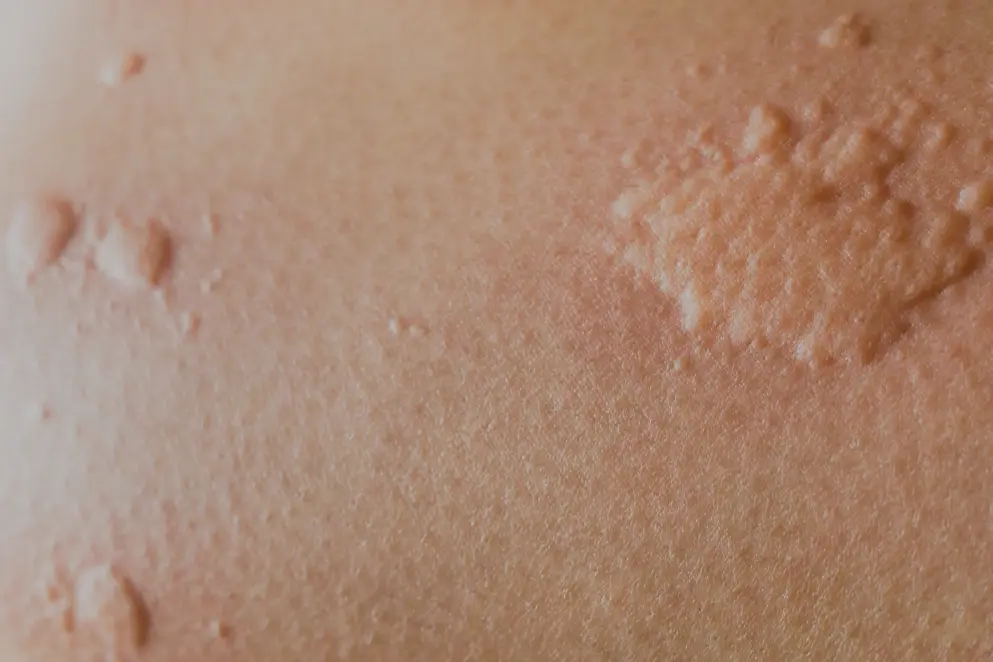
EADV 2023
"From past to present: What’s next for CSU?" EBAC-accredited symposium
Watch the full accredited symposium to be directed to the post-event evaluation from where, upon completion, you will be eligible for 1 CME credit.
Professor Marcus Maurer chaired this live symposium at the European Academy of Dermatology and Venereology (EADV) Congress 2023 in Berlin, Germany. Watch the recording to see Professor Maurer, Professor Emek Kocatürk Göncü and Professor Dr Martin Metz look at the continuing innovations in the treatment of chronic spontaneous urticaria (CSU) and how these impact guidelines and the care of people with the condition.
Session 1: Welcome and introduction – Professor Marcus Maurer and Professor Emek Kocatürk Göncü
Session 2: Exploring the past: Approaches to CSU care – Professor Marcus Maurer
Session 3: Current guidelines in CSU management – Professor Emek Kocatürk Göncü
Session 4: What's new in management? The future of personalised medicine – Professor Dr Martin Metz
Session 5: Q&A – All faculty
After participating in this educational programme, you will be able to:
- Recognise the advancement in clinical practice for the management of CSU
- Identify the advances in classification of CSU according to current guidelines
- Distinguish the differences in treatment options available for personalised medicine
Accreditation Statement
 This programme is accredited by the European Board for Accreditation of Continuing Education for Health Professionals (EBAC) for "1" hour of external CE credit. Each participant should claim only those hours of credit that have actually been spent in the educational activity
This programme is accredited by the European Board for Accreditation of Continuing Education for Health Professionals (EBAC) for "1" hour of external CE credit. Each participant should claim only those hours of credit that have actually been spent in the educational activity
CSU symposium overview
In this live, interactive event, the faculty charted the relatively recent transformation in our understanding of and ability to treat CSU, and looked at how current and emerging interventions continue to push the boundaries and improve treatment outcomes.
Attendees participated in the decision-making process for a challenging case, to review current best practice and discover persistent treatment gaps. They also heard about the possible treatment approaches for CSU, and how these are represented among current and emerging pharmacological treatments.
Listen to Professor Marcus Maurer as he provides his thoughts on the symposium, a week after EADV.
Meet the faculty
 Professor Marcus Maurer
Professor Marcus Maurer
Marcus Maurer is Professor of Dermatology and Allergy, Co-Director for the Fraunhofer Site for Allergology and Immunology of the Fraunhofer Translational Medicine and Pharmacology ITMP and Executive Director for the Institute of Allergology, Charité – Universitätsmedizin, Berlin, Germany.
Disclosures: Professor Maurer is or recently was a speaker and/or advisor for and/or has received research funding from Allakos, Alvotech, Amgen, Aquestive, Aralez, AstraZeneca, Bayer, Celldex Therapeutics, Celltrion, Evommune, GSK, Ipsen, Kyowa Kirin, Leo Pharma, Lilly, Menarini, Mitsubishi Tanabe Pharma, Moxie, Noucor, Novartis, Orion Biotechnology, Resonance Medicine, Sanofi/Regeneron, Septerna, Third Harmonic Bio, Trial Form Support International AB, ValenzaBio, Yuhan Corporation, and Zurabi.
 Professor Emek Kocatürk Göncü
Professor Emek Kocatürk Göncü
Emek Kocatürk Göncü is Professor at the Department of Dermatology, Koç University School of Medicine, Istanbul, Turkey.
Disclosures: Professor Kocatürk Göncü is a speaker and advisor for Bayer, La Roche Posay, Menarini, Novartis, and Sanofi.
 Professor Dr. Martin Metz
Professor Dr. Martin Metz
Martin Metz is a Professor of Dermatology at the Institute of Allergology at the Charité – Universitätsmedizin and Fraunhofer Institute for Translational Medicine and Pharmacology ITMP, Allergology and Immunology, Berlin, Germany.
Disclosures: Professor Dr. Metz is in receipt of honoraria or consultation fees from Amgen, argenx, AstraZeneca, Celldex Therapeutics, Escient Pharmaceuticals, Jasper Therapeutics, Novartis, Pharvaris, Sanofi-Aventis, and Third Harmonic Bio.
In compliance with EBAC guidelines, all speakers/ chairpersons participating in this programme have disclosed or indicated potential conflicts of interest which might cause a bias in the presentations. The Organizing Committee/Course Director is responsible for ensuring that all potential conflicts of interest relevant to the event are declared to the audience prior to the CE activities.
Gain additional insights from our faculty in these follow-up videos from the European Academy of Dermatology and Venereology (EADV) Congress 2023 symposium, ‘From past to present: What’s next for CSU?'
Listen to Co-Chair Professor Marcus Maurer as he describes the challenges physicians face when treating people with CSU. He presents up-to-date strategies and resources to address these issues and highlights upcoming areas of research that have the potential to improve patient outcomes. Professor Maurer emphasises how digital tools, such as the CRUSE app, can be beneficial for patients and physicians.
Join Co-Chair Professor Emek Kocatürk Göncü as she reviews her presentation on the current guidelines for CSU management. She highlights the primary recommendations from the guidelines and their implications for clinical practice. Additionally, Professor Göncü elaborates on the guidelines' approach to advanced treatment modalities and their potential application to enhance patient outcomes.
Professor Dr Martin Metz highlights key messages from his presentation on the prospective developments in CSU management and personalised medicine. He elaborates on potential treatments and technologies that he anticipates will be integral to the treatment landscape and outlines the challenges inherent to their integration into CSU management. Furthermore, Professor Dr Metz discusses the potential application of personalised medicine tools and underscores the necessity of collaborative initiatives to advance the current arsenal of treatment options.
of interest
are looking at
saved
next event
Developed by EPG Health, for Medthority independently of the sponsor, Novartis Pharma AG, which has had no editorial input into the content. Medthority received education funding from the sponsor in order to provide healthcare professionals (as defined by German Law and regulations) registered for the EADV Congress, and following the congress to Medthority’s healthcare professional members, access to the highest quality medical and scientific information, education and associated relevant content.

